[Community Reports]
A column about past, present and future ongoings in international electroacoustic and related communities [index].
The First Retrospective of Mexican Electroacoustic Music
Originally published in the Proceedings of the International Computer Music Conference (ICMC) 2004 (Miami, USA, 2004). Many minor revisions and corrections have been made and a preface discussing recent developments has been integrated for publication in this issue of eContact!.
Abstract
The first retrospective of Mexican electroacoustic music was held in March 2003. I undertook the organization of this event, as well as an important body of research work that hadn’t been done before. I rescued old works that were lost, and reconstructed the difficult beginning of the history of this field in Mexico. This paper looks at the origins and development of music related to technology in Mexico, and attempts to establish the first wide-reaching documentation of its history. At the same time, it critically analyses the impact of and void left behind by the first generation of Mexican composers working with electroacoustics, in order to reconcile it with the present and future of the genre in Mexico.
Preface
Its been a long time since I wrote this article about the history of Mexican Electroacoustic Music. It started as research for a Mexican electroacoustic retrospective in the Radar Festival in 2002. Eight years have passed, and many things have happened since then. In this Preface, my intention is to complete the article and to clarify the many positive things that are happening right now in Mexico, where not only electroacoustic music, but also experimental music and sound art have had a big boom in the recent years.
The centre for electroacoustic music Centro Mexicano para la Música y Artes Sonoras (CMMAS) in Morelia was founded after I wrote the article. This centre, directed by Rodrigo Sigal, is unique in Latin America. They have started an annual international electroacoustic music festival (Visiones Sonoras), yearly 15-day workshops for composers (Prácticas de Vuelo), and offer residences for Mexican and international composers in order for them to concentrate on their creative projects. This year CMMAS, in collaboration with the Conservatorio de las Rosas de Morelia, is also starting a Bachelor in Music and Technology programme.
Elsewhere, Roberto Morales-Manzanares returned from his Doctoral studies at UC Berkeley California four years ago, and relaunched the bachelor in electroacoustic music at the Music School of Universidad de Guanajuato, the first program of its kind in Mexico in the 1990s. Roberto also reassumed the management of El Callejón del Ruido Festival and is looking for funding to rehabilitate this important venue. On the other hand, the Radar Festival continues and is now directed by Mexican composer Rogelio Sosa, who has insisted in promoting particularly experimental electronic music. Every year they have had impressive audiences and many artists from all around the world.
There is a new private music association in Oaxaca called Instrumenta that has been running now for seven or eight years. It runs academic classes for performers and composers, both in traditional classical music and contemporary music, and of course the electroacoustic courses are part of it, so this has also helped the development of this music. Also, they have given commissions for young composers already two times, once in 2006 and the second time in 2007.
We can see how there are new educational offers — courses, degrees — in the field of electroacoustic music, but still, we are still lacking of a one-year intensive course that could serve people from different areas (sound artists, film sound designers, composers, sound poets, radio artists, etc.). This is why Roberto Morales and I are now trying to find the necessary funds to establish a yearly intensive course for sound art and electroacoustic music.
Besides Instrumenta, there is a new biannual electronic art and video festival (that includes electroacoustic music and sound art) organized by the Centro Multimedia in Mexico City, Transitio_MX, and in 2011 they will hold their fourth edition. Other private organizations have appeared, such as the group Electrovisiones, which is maybe more centred in pop alternative electronic music but also offers workshops and organizes many concerts. There are still other venues that promote electroacoustic music in Mexico these days like La Habitación del Ruido (House of Noise) in the University del Claustro de Sor Juana, which organizes concerts, or the weekly radio program in Puebla, Artes Electroacusticas, but there isn’t here enough space to elaborate on all these things.
In 2008 I published the triple CD México Electroacústico [1960–2007] [Irradia IRD002]. This was the long-term result of the retrospective I did in 2002, thanks to a grant I received from the Fondo Nacional para la Cultura y las Artes (FONCA). The three CDs were grouped by generations: the origins (pioneers), the consolidation (composers born from 1955 to 1965) and the contemporaries (composers born after 1966). Many young composers came back to Mexico after studying in Europe, so it was impossible to include in the third CD all representative composers; nevertheless, I hope that new CDs will be released in the near future.
Finally, five or six years ago, when Francoise Barrière, the director of IMEB in Bourges France, asked me several times why didn’t we have an electroacoustic music organization in Mexico, I told her that we needed one, but that Mexicans normally don’t know how to work as a team and that individual selfishness could be an obstacle for this project. In fact, there have been contemporary music associations and they have never worked due to a lack of democratic diversity. This year, I decided to risk myself and asked the most representative composers and sound artists in Mexico to form a council, and from there, we organized Mexico’s first sound art and electroacoustic community. Now, the AARSOM (Asociación de Arte Sonoro Mexicano) has begun its existence and we are part of the international CIME association, but we still need to settle the bases and extend an open invitation to all composers and sound artists in Mexico to become part of it. We have already organized two concerts, one in Cuba at during Havana’s Festival de Musica Electroacustica, and one in the Festival de Música Contemporánea de Morelia. We are planning to publish at least one CD every year and to organize a symposium, and many more things. This initiative has begun to bear fruit, and we have learned to work as a team, disregarding æsthetic differences. We, as newer generations from that of the pioneers, have proven to be a lot different: we are plural, and we want to construct in a positive way and create all the links needed to support Mexican sound art and electroacoustic music, and I am sure that this will be for the better.
One thing in closing, in this article I have reviewed the history of Mexican Electroacoustic Music, but I have not talked much about experimental electronic music today, and about sound art, two realms that go beyond academic and cultural institutions. There are now so many alternative forums for the development of these areas, but this is not the place to talk about it, I hope that in the near future I will be invited to write an article for this magazine about these autonomous phenomena.
Manuel Rocha Iturbide, 9 June 2010.
Introduction
In 2002, José Wolfer, then director of the contemporary music festival Radar in Mexico, invited me to curate a two-concert retrospective of Mexican electroacoustic music for the 2003 edition of the festival. This idea seemed to me very valuable because such an event had never been organized in this country. Soon after I began to develop the project, I felt ti was important to take my research much further than was necessary, in order to articulate the history of Mexican electroacoustic music, to provide a critical personal view of what happened here in the early days of this genre and to explain the problems and difficulties of its development.
This research turned out to be quite difficult because there was very little literature on the subject and a lot of fieldwork needed to be done. It was especially hard to find information about the works produced in the 60s and 70s, because a centre had not existed for the experimentation, production, diffusion and conservation of electronic works, functioning in an appropriate and continuous way through the four and a half decades of history of this music specialty in our nation.

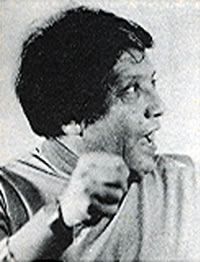
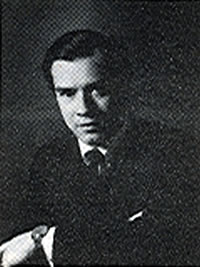
Manuel de Elías
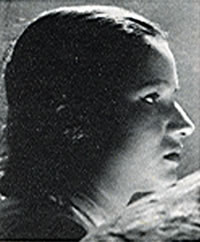
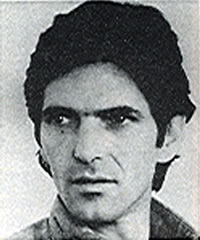
Mario Lavista
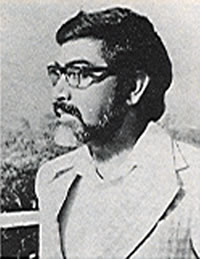
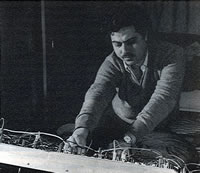

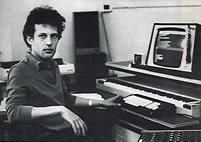
The Origins
Carlos Chávez (1899–1978) is perhaps the first Mexican composer who became interested in the possibilities of technology in relation to music. In 1932 he travelled to the RCA Victor and the Bell Telephone studios in the USA, and wrote two articles that would become part of his book Toward a New Music: Music and Electricity, published in 1937. Here, Chávez foresaw the institutional obstacles that composers and artists interested in the new audio media 1[1. For Chávez, these new media were electric photography, sound photography and electric instruments that hadn’t been invented yet.] would later confront everyday. He considered that the day would come when these artists would be able to utilize these media without the help of technical intermediaries, and a new path would be open for the creation of new forms of art. However, Chávez did not maintain his early interest and left the good intentions to subsequent generations of musicians.
It wasn’t until the 1960s that there was any significant development of contemporary music in Mexico, owing to the creation of the Taller de composición (composition workshop), directed by this same composer. From this workshop, composers like Mario Lavista, Francisco Nuñez, Héctor Quintanar and Julio Estrada emerged, who assimilated the newest serial techniques imported from Europe, the aleatory music techniques, and who acquired increasing interest in the new sonorous languages emerging from technological developments (Moreno 1994).
Some of these composers, as well as members of the elder generation of composers like Carlos Jiménez Mabarak, Manuel Enríquez, Manuel de Elías and Alicia Urreta, tried their hands in the fields of electronic music and musique concrète, thanks to their contacts within Mexico and with some of the European and North American pioneers of this genre. 2[2. Particularly with Jean-Etienne Marie in Paris, and with the composer members of the electronic music studio at Columbia-Princeton University (Milton Babbit and Vladimir Ussachevsky).] Yet, it was not until the end of the 1960s when the engineer Raúl Pavón (b. 1927) 3[3. An electronic engineer passionate for music and technology since 1958, inventor of various synthesizers and writer of a book on electronic music and multimedia in 1980.] together with the composer Héctor Quintanar (b. 1936) created the first laboratory of electronic music in Mexico, at the grounds of the National Conservatory of Mexico City (with the support of Carlos Chávez). Moreover, this project did not experience a fruitful life.
New musical technologies (like synthesizers and the tape machine) and the possibilities they offered to create music with new ideas and new ways of working with sounds attracted the generation of Mabarak 4[4. Composer from an elder generation (1916–1994) who wrote the first electroacoustic piece in Mexico (Paradise of the Drowned [1957], for tape and ballet), and also creator of the first musique concrète concert in our country that same year. It seems paradoxical that this composer and pioneer, who produced concerts regarding this musical language, only wrote two pieces for tape.], Enriquez and Urreta, as well as younger composers like Mario Lavista (b. 1942). Later, Lavista wrote various articles about how the composer could work directly with sound matter, about the necessity to create new types of musical representation for electronic music (Lavista 1974) and suggested composers should develop new ideas starting from the sound-noise paradigm 5[5. Lavista presented this paper in the 1977 symposium, The Identity of Latin American Music, held at Casa de las Américas, Havana, Cuba.] (Lavista 1984).
Development of the First Epoch
The 1970s saw the emergence of the experimental group Quanta 6[6. Created by Mario Lavista, joined by Antero Chávez, Víctor Medeles, Juan Cuahutemoc Herrejón and Fernando Nicolás Echeverría.], which incorporated live electroacoustic manipulations in some of their music. Furthermore, Héctor Quintanar was interested in composing by way of performing and manipulating synthesizers live (Pulido 1971). He also organized a seminar centred around electronic music with the participation of national and international composers at the Universidad Nacional Autónoma de México (UNAM) in 1974. That same year, composer Julio Estrada (b. 1942) in collaboration with the mathematician Jorge Gil, began to investigate computer-assisted composition. 7[7. Julio Estrada is a pioneer in Mexico in using the computer to produce data which is then used for the creation of an instrumental composition.] At the same time, Raúl Pavón founded the electronic music class at the Conservatorio Nacional de Música, giving the opportunity to emerging composers like Juan Cuahutemoc Herrejón to start experimenting in this area. Soon thereafter, the young composer and electrical engineer Antonio Russek (b. 1955) created the first private Laboratory for the production and broadcasting of electronic music in his own home (1975).
However, despite such positive factors contributing to the development of electronic music in Mexico, the fact is that there was little continuity and very little research, due to the lack of forums, concerts and conferences. There were hardly forty pieces of electroacoustic music created through the first two decades of production in our country (many of them that have since been lost or have not been recovered). It would not be until the beginning of the 1980s that a new generation of composers with major passion for this language would emerge.
Independent of the bureaucratic problems that hindered the development of the electroacoustic field in Mexico 8[8. Due to the lack of support from the cultural public institutions in Mexico to renovate the equipment of the laboratory and keep it working.], I think the main problem was that those generations barely showed interest for this genre. Many of them felt synthesizers were simply new instruments with fresh sound colours that could supplement the ones already existing in the orchestra. This is why these composers were unable to go deeper into the technical-esthetical specificities of this new language. On the other side, the creation of electroacoustic music demanded thorough studies of acoustic sciences, a factor which prevented many composers from investing the time and effort required to produce successful results. 9[9. At those times only the engineer Raúl Pavón understood the true possibilities of this new musical language. It is unfortunate that he was never considered by his colleagues as a “serious” composer (he doesn’t appear in any of the dictionaries of Mexican composers, although Julio Estrada speaks of him benevolently in the book La música en México). Pavón performed important research and composed multimedia electroacoustic works in the early 80s but suddenly disappeared from our country in the early 90s. Of the “academic” composers of this generation, only Manuel Enriquez and Francisco Nuñez maintained an interest in electroacoustic music and created new forums and spaces for its production and diffusion.] Finally, another impediment was that the traditional academia had no interest in the creation of an electronic music specialization in the music schools, and in fact, still today this is a problem in Mexico. We should try to analyze why in a Latin American country analogous to Mexico like Argentina an electronic music laboratory was founded as early as 1958 10[10. Founded by Francisco Kröpfl, the Laboratorio de Investigación y Producción Musical is now located in the Centro Cultural Recoleta in Buenos Aires.] (which is still running today), while in Mexico this situation never became possible.
The True Pioneers
My personal view is that the real origin of electroacoustic music in Mexico happens in the 1980s, particularly outside the cultural institutions of the government, and thanks to composers like Antonio Russek, Vicente Rojo (b. 1960), Arturo Márquez (b. 1960) and Roberto Morales (b. 1955), who provided an important impulse to the genre through the creation of works and interdisciplinary concerts. 11[11. In the 1980s there were various interdisciplinary collectives that presented electroacoustic works, such as Atentamente a la dirección, Música de Cámara, La Sonora Industrial, El Alacrán del Cántaro, etc.] Russek created the Centro Independiente de Investigacion y Multimedia (CIIM), a studio in which courses were given and where composers like Eduardo Soto Millan, Semir Menaceri, etc. produced various compositions. Nevertheless, we can’t deny that the interest of the elder composer Manuel Enriquez (1926–1994) in electroacoustic music as well as the creation of a new festival of contemporary music by him — Foro de Música Nueva, a festival supported by the government body Instituto Nacional de Bellas Artes (INBA) that lasted from 1979 until 1994 — were also important factors for the diffusion of this music in this period.
The First Composers with Specialized Degrees
Other composers who decided to escape the academic stasis in Mexico by undertaking electroacoustic music studies in foreign countries soon joined the indisputable pioneers of electroacoustic music in Mexico. This is the case of Javier Álvarez (b. 1955) 12[12. In 1982, Álvarez began electroacoustic music studies in England, and by the mid-1980s was winning international prizes and awards for his works.], and a couple years later Manuel Rocha Iturbide (b. 1963), Antonio Fernandez Ros (b. 1961), Guillermo Galindo (b. 1960) and others that are part of the first generations that received an academic education in the field of computer music. 13[13. Like the realization of Masters and Doctorates in computer music, although there were also other composers that undertook less specialized studies in foreign countries like Salvador Torre (in the mid-80s) and Gonzalo Macías (in the early 90s), who both studied electroacoustic music in the Conservatoire de Boulogne-Billancourt in Paris, for example.]
Notwithstanding the efforts made by today’s emerging composers to create new spaces for the teaching and dissemination of this music, there is still neither a Bachelor’s degree nor specialized courses in electroacoustic music available in Mexico, which further hinders its development here. It is therefore understandable that the newer generations of composers born in the 70s and 80s continue to immigrate to foreign countries in order to pursue their studies. 14[14. Such is the case of Rodrigo Sigal and Pablo García Valenzuela, who undertook doctoral studies in computer music at City University in London, England, and of Rogelio Sosa, who studied a year at IRCAM and who is currently doing his Doctorate at the Université de Paris VIII in France.] Nevertheless, some of them have been able to evolve in our country thanks to isolated courses taught by some composers. Roberto Morales tried to found a computer music Bachelor in the Universidad de Guanajuato, and for five or more years he fostered a new generation of young composers. 15[15. Of this group of young composers, Victor Manuel Dávalos and Mauricio Valdez stand out.] Unfortunately, the conservative and bureaucratic character of this institution ultimately prevented the creation of this program. On the other hand, Javier Álvarez (a Mexican composer living in England [Ed.: now the Rector of the Conservatorio de las Rosas in Morelia, Mexico]) has come to Mexico almost every year to teach courses of electroacoustic music courses at Mexico City’s Centro Nacional de las Artes, and from these courses new composers have come up in the Mexican scene. Finally, a few years ago I formed a group of young composers and created a workshop that still runs to this day. 16[16. This workshop generated the collective Machintosco, made up of Miguel Hernandez Montero, Guillermo Acevedo, Victor Romero, Jose Manuel Mondragón and Salvador Rodriguez. In 2001 they received first prize at the Bourges festival in the category of electroacoustic music with video.]
New Generations, Spaces and Forums
Today in Mexico there are many composers interested in the electroacoustic music field, and even though many of them haven’t still specialized in this discipline, they have nonetheless produced some interesting works. 17[17. This is the case of composers like Ignacio Ignacio Baca Lobera, Carlos Sandoval, Gabriela Ortiz, etc.] On the other side, in the past ten years, new forums and spaces have appeared and have helped the difficult development of this music. Also, this last decade has seen the appearance of numerous spaces and forums that support the expression and diffusion of this music, thanks to festivals like La Bienal internacional de Radio 18[18. The first edition of the Biennial was organized by Radio Educación in 1996. Thanks to the enterprise of the director of this institution, Lidia Camacho, in this forum they have encouraged the development of the Radio Art genre that belongs to the electroacoustic art field.], El Callejón del Ruido 19[19. Founded by Roberto Morales-Manzanares in 1994 in Guanajuato.], Festival Internacional de arte sonoro 20[20. Founded by Guillermo Santamarina and Manuel Rocha Iturbide in 1999. This festival has contributed to an expansion of sound art in Mexico, and under its wing an important number of Mexican sound artists have emerged. Apart from staging countless electroacoustic music concerts for tape, live electronics and with instruments, it has also opened a space for experimental electronic music.] and recently Radar. Other factors that have helped increase the interest for this music in Mexico are the technological developments of computer programming in recent years.
Through the 1990s, the emerging cultural institutions played an important role in the promotion of electronic art like the Centro Multimedia and the Centro de la Imagen (Centro Nacional de las Artes), the Ex Teresa Arte Actual and Laboratorio Arte Alameda museums (Instituto Nacional de Bellas Artes), and so on. Nevertheless it’s a pity that still today we don’t have a computer music centre, a project similar to the Centro Multimedia, which would offer advanced courses on music and technology as well as postgraduate studies. Unfortunately, the academic musical scene remains at a stand-still. As for now, we have been unable to launch postgraduate musical studies in Mexico, except for the Universidad Veracruzana’s Facultad de Música Xalapa, which offers the only Masters in Musicology and in Instrumental Composition in the country. However, the UNAM will soon launch a series of Master degrees in music (after ten years of a stagnant bureaucratic hold), one of them related with music and technology. [Ed.: a Master’s and Doctorate in Music are now offered through the Escuela Nacional de Música]
In spite of the academic delay our country is experiencing, it has profited from the incredible development of Pop electronic music, which is danceable all around the globe. This boom has helped the popularity of DJs and collectives of experimental groups 21[21. It is obvious that the most part of pop electronic music in Mexico is commercial and is centred in repetitive beats that evolve into styles like the "Drum and Bass", "Trance", "House", etc. But Alvaro Ruiz, DJ Linga and some other young composers like Mario de Vega, have been exploring other areas of experimental electronic music. On the other hand, we have collectives like Nortec in Tijuana, and Nopal Beat in Guadalajara that have made interesting proposals that kind of move away from the commercial scene.], as well as sound artists that are producing alternative music, without necessarily owing it to an academic musical background. 22[22. An example is the artist from Monterrey Daniel Lara, or the sound artist Luz María Sánchez from Guadalajara.]
Conclusions
Electroacoustic music is a language as serious and sophisticated as contemporary instrumental music. I believe that this retrospective has emphasized the fact that Mexico today has a vast spectrum of composers, those with relevant trajectories in the field, younger composers who have already made a name for themselves and newer talented rising generations in need of development.
Finally, it was impossible to objectively reflect on the most relevant aspects of the history of electroacoustic music in Mexico in only two concerts, so I felt obliged to implement four listening stations that presented the composers grouped chronologically. 23[23. Composers born in the first four decades of the twentieth century, in the 50s, 60s and in the 70s.] On the other hand, it was difficult to include all of the composers who have done something relevant in the field, because some of their pieces (mostly those by composers who have already died) have been lost or have not recovered, and the effort to trace these pieces will require a lot of work. It is important to mention that not all of the composers that I contacted sent me their pieces, even though the most prolific did.
If the creation of a new laboratory of computer music is not possible, where pieces could be produced and advanced workshops and programs be offered (at graduate and postgraduate levels), it would at least be desirable to create a small Media Centre whose tasks would include the accumulation of information and the storage of electroacoustic pieces produced in Mexico. This place could also host the offices of a Mexican electroacoustic music association in charge of the dissemination of our music nationally and internationally 24[24. As well as publishing records of Mexican electroacoustic music (like CDs and books) with the support of government institutions, because this area hasn’t been exposed.], As for now, the efforts have been individual and many times have remained diluted. I hope that the interested composers of the musical trade become receptive to these ideas in order to carry out this task.
Acknowledgements
This investigation came into being thanks to the original idea of José Wolfer, to the enormous interest of all the composers who kindly sent me their works and to the valuable help of the research centre Centro Nacional de Investigación, Documentación e Información Musical “Carlos Chávez” (CENIDIM) in regards to the discoveries of pioneer electroacoustic works by Mexican composers (such as Tlalocan of Jiménez Mabarak, Prehistoric Mass by Enríquez, and Electronic Studies by Juan Cuahutemoc Herrejón). Composer Antonio Russek’s support was essential, as he had he zealously saved and recovered many pieces of the 60s that we had thought lost (like Contrapunto by Mario Lavista, and Non Nova Sed Novo by Manuel de Elías). Antonio helped me to reconstruct the primordial facts of the early history of electroacoustic music in our country. I am also obliged to Alejandra Odgers for having extensively documented Mexican electroacoustic works for her Bachelor’s degree thesis (this register, completed in 2000, helped me set the basis to carry out my inquiry) 25[25. I hope Alejandra will revise this valuable work, so that she can include composers born in the 1970s, many of whom have already stood out internationally. It would be also useful if she would indicate which pieces have been awarded prizes, and in which studios the works were composed, in order to understand which are the more relevant works in our history.], and to Gonzalo Macías for his interest in the retrospective, since he is currently investigating the development of the Mexican electroacoustic music with instruments for his PhD thesis in France.
Bibliography
Alcaraz, José Antonio. “Música Electrónica.” Heterofonía II no. 9 (November 1969). Mexico DF.
Álvarez, Javier. “La música electroacústica en México.” Pauta: Cuadernos de teoría y crítica musical (January–June 1996), pp. 57–58. Mexico DF: CENIDIM.
Chávez, Carlos. Toward a New Music: Music and Electricity. New York: Norton, 1937.
De Elías, Manuel. “Sobre Música Electrónica.” Heterofonía I no. 2 (September 1968). Mexico DF.
_____. “La creación musical en México durante el siglo XX.” Pauta: Cuadernos de teoría y crítica musical XI (April, May, June 1992). Mexico DF: CENIDIM.
De Quevedo, Lourdes. La emancipación artística de la radio. Mexico DF: Universidad pedagójica nacional, 2001.
García, Morillo Roberto. "Carlos Chávez. Vida y Obra.” Fondo de Cultura Económica, Mexico, 1960.
González, Jorge R. “Breve reseña del primer seminario de música electrónica.” Heterofonía VII no. 2 (March–April 1974). Mexico DF.
González, María de los Ángeles and Leonora Saavedra. "Música mexicana contemporanea.” Mexico DF: Fondo de Cultura Económica, 1982.
Kahn, Douglas. Noise, Water, Meat: A History of Sound in the Arts. The MIT Press, 1999.
Lavista, Mario. “Creación e interpretación en la música electrónica.” Dialogos 10/5 (September–October 1974). Mexico DF.
_____. “En el ambiente de la renovación creadora de los lenguajes artísticos.” Musicología en Latinoamérica. La Habana: Editorial Letras Cubanas, 1984.
Malmström, Dan. Introducción a la música mexicana del siglo XX. Breviarios del Fondo de Cultura Económica. First edition, 1977.
Márquez, Arturo. “La música en la interdisciplina en México. Tendencias Actuales.” Variaciones, cuadernos de música contemporánea. Música Americana hoy 2. (November 1993). Valencia: Area de música del IVACEM.
Moreno, Rivas Yolanda. “La composición en méxico en el siglo XX.” Mexico DF: Consejo Nacional para la Cultura y las Artes, 1994.
Odgers, Alejandra. “La música electroacústica en México.” Unpublished Bachelor in Compositon thesis, Escuela Nacional de Música, UNAM, 2000.
Pavón, Raúl. “La electrónica en la música… y en el arte.” Mexico DF: BA-SEP-CENIDIM, 1981.
Pulido, Esperanza. “Conversación con Héctor Quintanar. Director del laboratorio de música electrónica del conservatorio.” Heterofonía IV no. 18 (May–June 1971). Mexico DF.
Rocha Iturbide, Manuel. “Santo, Blue Demon and Co.: True Pioneers of Electroacoustic in Mexico?” Presented in the symposium “El futuro Más Acá. The History of Mexican Science Fiction Films.” Mexico, 2003.
Rojo, Vicente. “Nuevas perspectivas latinoamericanas.” Pauta: Cuadernos de teoría y crítica musical XII (January, February, March 1993). Mexico DF: CENIDIM.
Soto Millán, Eduardo. Diccionario de compositores mexicanos de musica de concierto. Two volumes. Mexico DF: SACM and Fondo de cultura económica (Eds.), 1996.
Tello, Aurelio. “II encuentro mexicano cubano de música electroacústica.” Pauta: Cuadernos de teoría y crítica musical III, no. 11 (July, August, September 1984). Mexico DF: CENIDIM.
Social top